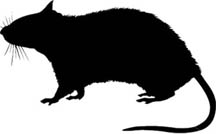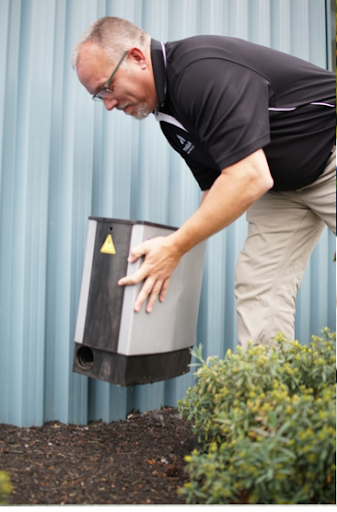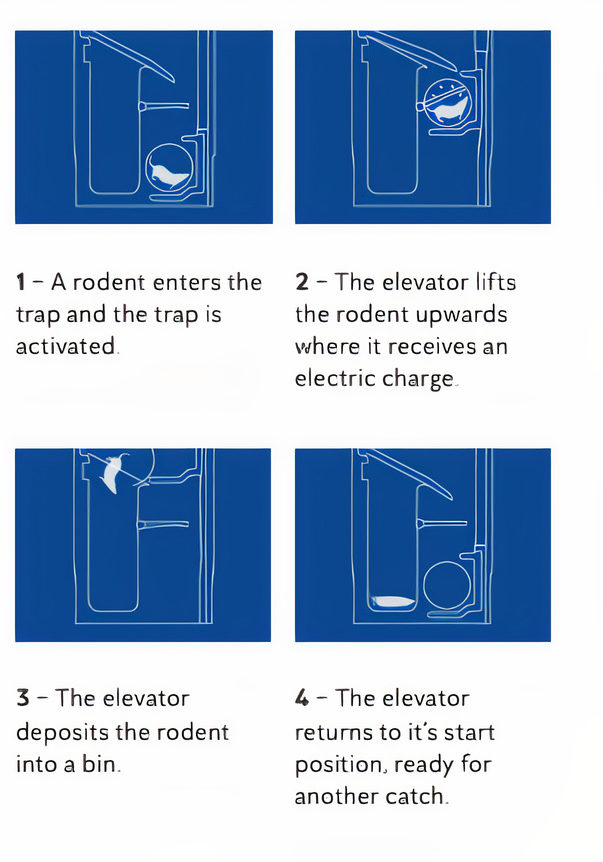About the Rodent Control Program
The City of Somerville is committed to rodent control and public education. Rats have always been present in cities and are a fact of urban life. However, they are only present because of human activities, and thus it is possible to reduce their numbers by working together as a community to modify our habits.
The Departments of Health and Human Services, Inspectional Services, Public Works, SomerStat, and other City departments are working together with residents, business owners, and community groups to promote a better understanding of rat behavior and how to minimize their presence. Please see the information below for more information and tips on rodent prevention in your neighborhood.
Contact Information
Jump To:
How can I prevent rats from becoming a problem on my property?
To control rodents you must remove easy access to the things they need to survive: food, shelter, and water. Like any animal, rats live in a neighborhood because they can find the resources that they need. Removal of these resources is necessary for the prevention and long-term reduction of rodent activity.
- Food
-
- Use trash containers with secure lids, and always keep them tightly closed. Never store trash outside of a securely closed barrel.
- Regularly inspect your trash cans for signs of entry by rats, and clean them periodically to discourage feeding. Promptly replace any damaged barrels.
- The City will replace damaged City-issued trash or recycling toters at no cost to the resident. Please contact 311 to request a replacement. You will need to provide the serial number of the barrel.
- Refrain from leaving food out for birds, stray cats, or other animals. Any food that is available to other wildlife will also be available to rats, providing them with a constant food source and allowing them to quickly multiply.
- While the safest bet is to never leave any food out for animals, if you would still like to do so, it is best to only use feeders. Never leave food for animals directly on the ground.
- Take bird feeders in at night, promptly clean up any spills, and consider installing a seed catcher tray to prevent seeds from falling to the ground.
- Do not leave pet food or waste out overnight.
- Compost properly. Please see the City’s guide for guidelines on how to compost without attracting pests.
- Shelter
-
- Keep outdoor plants trimmed so that they don’t touch the house or other buildings. Trim them so that they have a “V”-shape, allowing a clear view of the ground that will discourage burrowing.
- Remove trash and yard debris frequently to eliminate possible burrowing areas.
- Store boxes, firewood, and equipment off the ground at least 18 inches and away from walls.
- Regularly inspect the exterior of your home for holes or gaps that could provide rat or mouse entry, and take steps to remove these entry points as quickly as possible. Rats can fit through holes that are ½ of an inch wide, and mice can fit through holes that are ¼ of an inch wide. See the illustration below for an approximate size reference. Common places where these holes can develop include:
- Around pipes, cables, or wires that enter into the home, or uncovered dryer vents
- Basement windows or doors that are left open, damaged, or not tightly installed, and thus have gaps that allow entry
- For information on how to recognize and close up these entry points, please see pages 7-10 in the City’s “Preventing Rats on Your Property” guide
- Water
-
- Empty any sources of standing water so that they don’t sit out overnight such as birdbaths, water bowls for pets, or other outdoor items that can hold water.
- Repair water leaks or drips at faucets, hoses, AC units that could cause long-term standing water.
What evidence might I see if rats or other rodents are on my property?
- Burrow holes
-
Burrow holes lead to underground rat nests. They are generally around 2-4 inches with smooth edges. They tend to be found under plants or items stored outdoors, so it’s important to regularly and proactively search for them. Rat nests usually have more than one entrance, so it is likely that you will find multiple holes. (View Image)
- Droppings
-
Rat droppings are around ½ - ¾ of an inch long, with blunt edges. They tend to be found near trash or other food sources. You can tell the difference between new droppings and older ones by how they look, which can help identify how recently there was rat activity in that area. Newer ones are dark and shiny, while old droppings are chalky and dry. (View Image)
- Gnaw marks
-
Like many other rodent species, rat teeth grow continuously, so they habitually chew on things to file them down and keep them short. Thus, looking for recent marks from rat chewing on things like garbage cans, fences, or under porches can also indicate where rats are getting their food, where they’re living, or the routes that they take to travel between the two. (View Image)
- Runways
-
Rats take the same pathways, called runways, over and over between their burrows and their food sources. The runways may extend over several properties, as rats may live at one location and feed at another. This repeated movement leaves certain signs that make it possible to identify rat presence and locate their burrows or food sources. Runways are generally located along a vertical surface such as a fence or wall. They can take the form of tamped down plants, dirt paths where plant life has been worn away or packed down earth. The oils on rat fur can also leave dark marks on surfaces that they frequently rub against while traveling, such as fences, walls, or the lattice under porches. (View Image)
How do I know if it is a rat? |
|
| Rats About 6-8 inches long at maturity Blunt head Ears proportional to the size of their heads Dropping around ½ in. long Thicker (sometimes hairless) tails |
 |
| Mice Generally about 2-4 inches in length from nose to end of tail at maturity Triangular head, pointed muzzles Disproportionally large ears Droppings range in length from 1/8 to 1/4 in. long (resembles rice) Thin tails |
 |
- I have seen rodents in my home or in my yard. Who should I call?
-
If you notice any evidence of rodent activity on your property, contact a professional exterminator to properly eradicate the issue. Exterminators can be found in the local phone book or online.Ask to see proof of MA state licensure for pest control before you sign a service contract.
- Who do I contact if I have concerns about rodents or health issues on private property?
-
Inspectional Services is responsible for enforcement of the State Sanitary Code, which covers sanitation violations on private property. The City also enforces the Somerville Code of Ordinances Section 11-38: Rodent Control. Inspectional Services health inspectors respond to housing and sanitation complaints, and also regularly inspect and issue violations for yard overgrowth, debris and other property conditions that can lead to rodent habitat.Please note that private property owners are responsible for keeping their properties and buildings/rental units safe and healthy as specified by local and state codes.
To report a rodent or health concern, please contact 311 by phone or online. If you can give specific information as to where you suspect rodents are feeding or burrowing, that is extremely helpful.
- Who should I contact if I see rodents on public property?
-
Inspectional Services conducts inspections when rodents are reported seen on public streets, sidewalks, parks, plazas, and other public spaces. Inspectional Services health inspectors regularly inspect and issue violations for trash and recycling improperly set out on the sidewalk, which can be a source of food for rodents. Inspectional Services works closely with the Department of Public Works, which is responsible for rodent control in public parks and squares, public buildings, and construction projects on public property. To report a rodent issue on public property, please contact 311 by phone or online.
- What will happen after I report a rodent control issue to the City?
-
Every rodent complaint is reviewed and inspected by Inspectional Services. If the rodent issue is on public land (including city streets), the City has a contract with a professional exterminator and will bait the area as deemed necessary by the City. If the complaint is on private property, Inspectional Services will enforce the State Sanitary Code and local ordinances when applicable, up to and including requiring private landowners to bait their property as deemed necessary for public health.
- How can I check on the status of my rodent control request?
-
When you report a rodent issue to 311, a work order is created for Inspectional Services. Each work order has a unique work order number. To check on the status of the work order, a resident can call 311 or log in online to view the status of the work order.
The Residential Rodent Control Assistance Program offers residents free rodent control services including placement of Terad3 bait boxes and burrow treatments. City Health inspectors will survey the property for evidence of rodents and provide educational materials on rodent prevention to owners and tenants, who must agree to take recommended rodent prevention actions (such as removing pet food bowls from outdoors or clearing debris from yards). Pest control services will then be provided by a licensed pest control company.
Some properties may qualify for alternative treatments such as dry ice and carbon monoxide To be eligible for the alternative treatment, the property must have burrow holes and no burrow holes may be closer than ten (10) feet to any occupied structure. If the property is eligible for an alternative treatment the first visit will be an evaluation only with treatment being done on a subsequent visit so the proper materials can be coordinated.
The program is available to residential properties with three or fewer units, and can only be completed with signed permission from both the property owner and all current tenants living at the property. Please call 311 (617-666-3311 if outside Somerville) for more information about the program, or to sign up.
Rodent control in Somerville is a joint effort between many City departments, including Health and Human Services, Inspectional Services, Public Works, SomerStat, and the Mayor’s Office, and involves many initiatives to curb the rodent population in Somerville. However, it is important to remember that City initiatives alone cannot fix a rodent problem – rodents are a community problem, and thus require the entire community to be involved in the solution.
Outline of the City of Somerville’s Rodent Control Initiatives
- Continual outreach to City residents, business and property owners, City staff, and others about rodent activity and prevention.
- City-wide distribution and free replacement of rodent-resistant trash and recycling toters.
- Use of rodent-resistant trash and recycling cans on sidewalks or City-owned properties.
- Offering free rodent baiting and burrow treatment to residential properties through the Residential Rodent Control Assistance Program.
- Performing regular inspections and pest control on City-owned properties including schools, City buildings, and parks.
- Enforcement of City ordinances that describe proper trash maintenance for residential and commercial properties; for specifics, see Somerville Code of Ordinances, Sections 11-31, 11-34, and 11-35.
- Regular review of pest management plans for food service establishments.
- Enforcement of pest control requirements prior to and during demolition projects.
- Regular data monitoring to both determine areas of high rat activity and evaluate rodent control strategies.
Check out our annual reviews for data and information on these initiatives:
Division of Rodent Control Responsibilities Among Departments
Below is a general overview of which area of rodent control is managed by different City departments. However, these divisions are not absolute and rodent control often involves coordination between departments.
- Inspectional Services Department: enforce City Ordinances, determine business compliance with rodent control requirements, organize and implement the Residential Rodent Control Assistance Program
- Department of Public Works: maintenance and emptying of trash receptacles on City properties and the public way, work with pest control contractor on City properties, address conditions that may cause rat activity on City properties
- Health and Human Services Department: develop and implement education initiatives, monitor inter-departmental data to measure rat activity and effectiveness of interventions
Stay up to date on the rodent prevention initiatives that City staff are currently working on by following the City Council’s Rodent Issues Special Committee.
Educational Resources
- Preventing Rats On Your Property: A Guide for Somerville Property Owners and Residents
- Video: Tips for Rodent Prevention
- Rodent Awareness Poster
- Choosing a Pest Control Contract: A Checklist for Business Owners
- Rodent Awareness Door Hanger
- Choosing a Pest Control Professional
- Trash Control Basics for Businesses:
- Rats Brochure:
- Rodent Proof Your Garden
- April 2019 Rodent Activity Study:
- Shareable Information

As part of its ongoing commitment to mitigating rodent activity, the City of Somerville is launching a six-month SMART City pilot program with Modern Pest Services to bring the latest rodent-control technology to Somerville and evaluate its effectiveness.
From February through July 2022, the City and Modern Pest will install and service 50 SMART Boxes in four different areas of Somerville. Somerville is the second municipality in the country to use this technology, after only Portland, Maine.
Over the course of the pilot, Inspectional Services, the Department of Public Works, and Health and Human Services staff will monitor the data and work with Modern Pest Control to respond to rodent activity throughout the city.
Check out our public heatmap showing our boxes at work!
Questions?
Please contact Alicia Privett, Environmental Health Coordinator, at aprivett@somervillema.gov.
Feedback
Please submit website feedback using this form. Be sure to include:
Thank you for your feedback!
